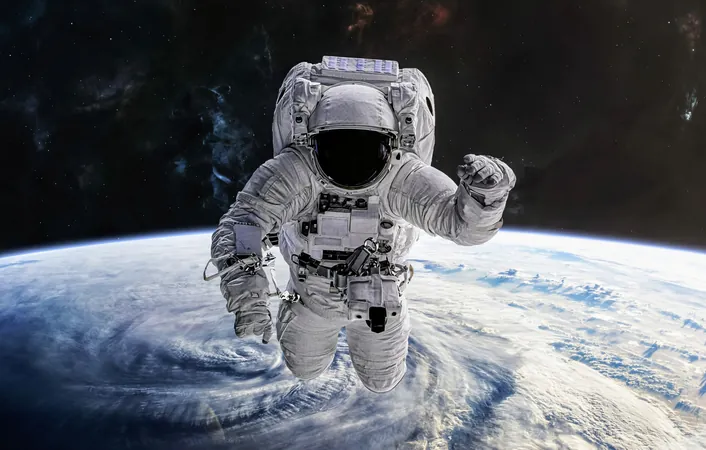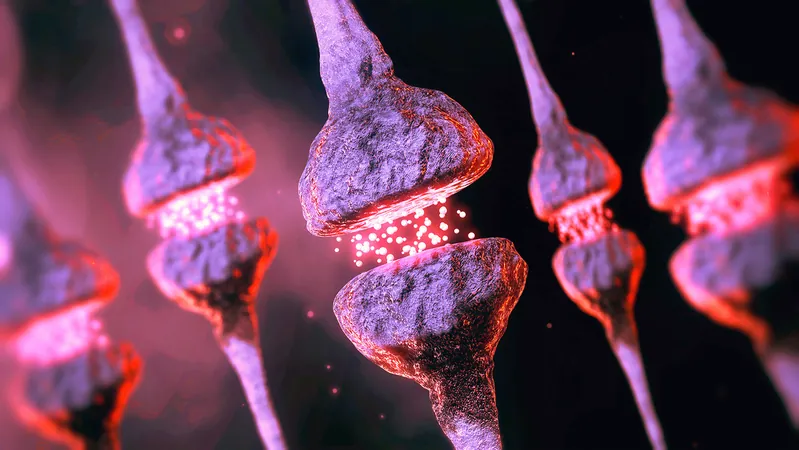
Shocking Discovery: Space's Low Gravity May Inflict Serious Heart Damage!
2024-09-24
Author: Sarah
A groundbreaking study from Johns Hopkins University reveals alarming insights into how the weightlessness of space could severely impact human heart health. Researchers have found that cardiac tissues exposed to low-gravity conditions exhibit signs of significant mitochondrial dysfunction and oxidative stress—two critical indicators of potential heart failure.
For the experiment, scientists sent 48 samples of bioengineered human heart tissue to the International Space Station (ISS) for a rigorous 30-day study. Upon returning to Earth, these tissues were significantly weaker, demonstrating abnormal rhythmic contractions—beating only about 50% as forcefully as their Earth-bound counterparts.
The Urgent Need for Understanding Space Health Risks
"As we prepare for manned missions to Mars and beyond, it’s crucial we fully investigate and mitigate the harmful effects of extended spaceflights on the human body," stated the study's lead author, Professor Deok-Ho Kim. Astronauts frequently suffer from reduced cardiac efficiency and irregular heart rhythms upon their return, and understanding these effects at the cellular level is vital for protecting their health.
Innovative Research with Bioengineered Tissues
The heart tissues were crafted from human induced pluripotent stem cells (iPSCs), a technique opened up by former PhD student Jonathan Tsui. These samples were housed in a special "tissue on a chip" device designed to replicate the adult human heart environment.
Tsui personally oversaw the transportation of the cardiac tissues to the Kennedy Space Center for a month prior to their launch onboard SpaceX CRS-20 in March 2020, ensuring a controlled and nutrient-rich environment.
Eyewitness Accounts of Space's Effects on the Heart
Data collected aboard the ISS showed startling results. The heart tissues demonstrated a drastic increase in the time interval between beats, extending nearly fivefold in the low-gravity environment. Thankfully, upon returning to Earth, these tissues gradually regained their normal rhythmicity, indicating some reversibility in the damage.
Researchers observed a concerning structural degradation in the muscle fibers—specifically, the sarcomeres, which became shorter and more disordered, signaling a potential link to heart disease. Enlarged and irregular mitochondria further indicated a halt in energy production, posing new questions about energy availability for astronauts during long missions.
Inflammation: A Hidden Killer?
Devin Mair and his research team also identified elevated gene expression associated with inflammation and oxidative stress among space-exposed tissues—markers routinely linked with heart disease. These findings echo previous data gathered from astronauts during post-flight health checks.
The Future: Shielding Hearts in Space
In an exciting development, Professor Kim's team is already deploying a second batch of 3D-engineered heart tissues to the space station in 2023 to test drugs aimed at protecting cells from low-gravity impacts. This innovative research may lead to breakthrough therapies that not only support astronaut cardiac health but could also provide vital insights for aging populations on Earth.
Moreover, the researchers are perfecting their tissue chip technology and investigating how cosmic radiation further influences cardiovascular health during deep-space missions—a topic that remains under-explored as space exploration ventures further from the Earth’s protective magnetic field.
This innovative study shines a light on critical challenges faced in space exploration, pushing us closer to ensuring that our brave astronauts can withstand the rigors of long-term spaceflight. As exploration dreams extend to Mars and beyond, keeping the heart healthy might be more crucial than ever.

 Brasil (PT)
Brasil (PT)
 Canada (EN)
Canada (EN)
 Chile (ES)
Chile (ES)
 Česko (CS)
Česko (CS)
 대한민국 (KO)
대한민국 (KO)
 España (ES)
España (ES)
 France (FR)
France (FR)
 Hong Kong (EN)
Hong Kong (EN)
 Italia (IT)
Italia (IT)
 日本 (JA)
日本 (JA)
 Magyarország (HU)
Magyarország (HU)
 Norge (NO)
Norge (NO)
 Polska (PL)
Polska (PL)
 Schweiz (DE)
Schweiz (DE)
 Singapore (EN)
Singapore (EN)
 Sverige (SV)
Sverige (SV)
 Suomi (FI)
Suomi (FI)
 Türkiye (TR)
Türkiye (TR)
 الإمارات العربية المتحدة (AR)
الإمارات العربية المتحدة (AR)